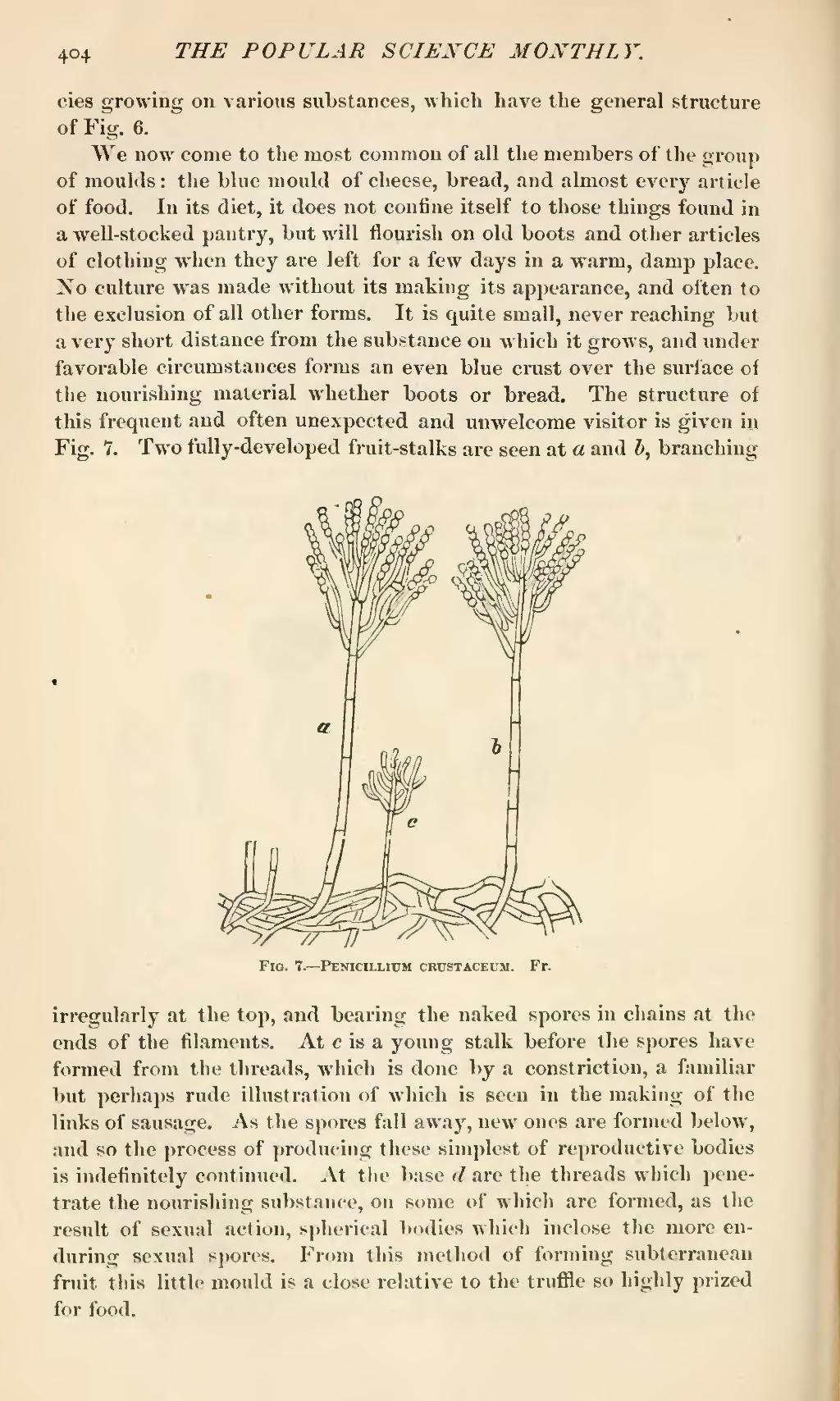cies growing on various substances, which have the general structure of Fig. 6.
We now come to the most common of all the members of the group of moulds: the blue mould of cheese, bread, and almost every article of food. In its diet, it does not confine itself to those things found in a well-stocked pantry, but will flourish on old boots and other articles of clothing when they are left for a few days in a warm, damp place. No culture was made without its making its appearance, and often to the exclusion of all other forms. It is quite small, never reaching but a very short distance from the substance on which it grows, and under favorable circumstances forms an even blue crust over the surface of the nourishing material whether boots or bread. The structure of this frequent and often unexpected and unwelcome visitor is given in Fig. 7. Two fully-developed fruit-stalks are seen at a and b, branching

Fig. 7.—Penicillium crustaceum. Fr.
irregularly at the top, and bearing the naked spores in chains at the ends of the filaments. At c is a young stalk before the spores have formed from the threads, which is done by a constriction, a familiar but perhaps rude illustration of which is seen in the making of the links of sausage. As the spores fall away, new ones are formed below, and so the process of producing these simplest of reproductive bodies is indefinitely continued. At the base d are the threads which penetrate the nourishing substance, on some of which are formed, as the result of sexual action, spherical bodies which inclose the more enduring sexual spores. From this method of forming subterranean fruit this little mould is a close relative to the truffle so highly prized for food.
